Wreck Of USS Lexington Found After 76 Years; Ship Was Predecessor Of Pensacola’s Lady Lex
March 7, 2018
Wreckage from the USS Lexington has been discovered by the expedition crew of Research Vessel (R/V) Petrel, which is owned by Microsoft co-founder and philanthropist Paul G. Allen. The Lexington was found 3,000 meters (approximately two miles) below the surface, resting on the floor of the Coral Sea more than 500 miles off the eastern coast of Australia.
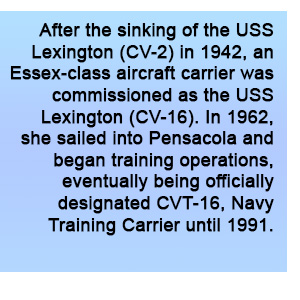 “To pay tribute to the USS Lexington and the brave men that served on her is an honor,” Mr. Allen said. “As Americans, all of us owe a debt of gratitude to everyone who served and who continue to serve our country for their courage, persistence and sacrifice.”
“To pay tribute to the USS Lexington and the brave men that served on her is an honor,” Mr. Allen said. “As Americans, all of us owe a debt of gratitude to everyone who served and who continue to serve our country for their courage, persistence and sacrifice.”
As one of the first U.S. aircraft carriers ever built, the Lexington became known as “Lady Lex” and went down with 35 aircraft on board.
“Lexington was on our priority list because she was one of the capital ships that was lost during WWII,” said Robert Kraft, director of subsea operations for Mr. Allen. “Based on geography, time of year and other factors, I work together with Paul Allen to determine what missions to pursue. We’ve been planning to locate the Lexington for about six months and it came together nicely.”
The USS Lexington was originally commissioned as a battlecruiser but was launched as an aircraft carrier in 1925. She took part in the Battle of the Coral Sea (May 4-8, 1942) along with the USS Yorktown against three Japanese carriers. This was the first carrier versus carrier battle in history and was the first time Japanese forces suffered a permanent setback in its advances on New Guinea and Australia. However, the U.S. lost the Lexington and 216 of its distinguished crew.
The Lexington had been hit by multiple torpedoes and bombs on May 8 but it was a secondary explosion causing uncontrolled fires that finally warranted the call to abandon ship. The USS Phelps delivered the final torpedoes that sank the crippled Lady Lex, the first aircraft carrier casualty in history. With other U.S. ships standing by, 2,770 crewmen and officers were rescued, including the captain and his dog Wags, the ships ever-present mascot.
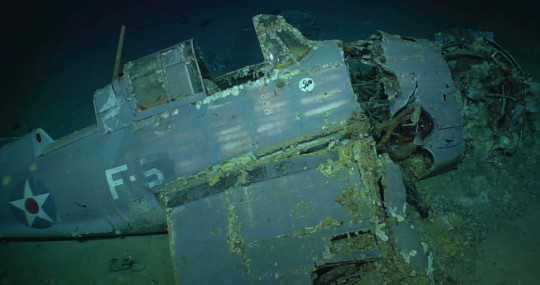 During the Battle of the Coral Sea the Japanese navy sank USS Lexington (CV-2), USS Sims (DD-409), and USS Neosho (AO-23), and damaged the USS Yorktown. The Japanese lost one light carrier (Shōhō) and suffered significant damage to a fleet carrier (Shōkaku).
During the Battle of the Coral Sea the Japanese navy sank USS Lexington (CV-2), USS Sims (DD-409), and USS Neosho (AO-23), and damaged the USS Yorktown. The Japanese lost one light carrier (Shōhō) and suffered significant damage to a fleet carrier (Shōkaku).
“As we look back on our Navy throughout its history, we see evidence of an incredible amount of heroism and sacrifice. The actions of Sailors from our past inspire us today,” said Sam Cox, Director of the Naval History and Heritage Command and retired U.S. Navy Rear Adm. “So many ships, so many battles, so many acts of valor help inform what we do now.”
The Battle of the Coral Sea was notable not only for stopping a Japanese advance but because it was the first naval engagement in history where opposing ships never came within sight of each other. This battle ushered in a new form of naval warfare via carrier-based airplanes. One month later, the U.S. Navy surprised Japanese forces at the Battle of Midway, and turned the tide of the war in the Pacific for good.
Based on some initial success with his M/Y Octopus, Mr. Allen acquired and retrofitted the 250-foot R/V Petrel with state-of-the-art subsea equipment capable of diving to 6,000 meters (or three and a half miles). Since its deployment in early 2017, the ship was active in several missions in the Philippine Sea before its transition to the Coral Sea off the Australian Coast.
Allen-led expeditions have also resulted in the discovery of the USS Indianapolis (August 2017), USS Ward (November 2017), USS Astoria (February 2015), Japanese battleship Musashi (March 2015) and the Italian WWII destroyer Artigliere (March 2017). His team was also responsible for retrieving the ship’s bell from the HMS Hood for presentation to the British Navy in honor of its heroic service. Mr. Allen’s expedition team was permanently transferred to the newly acquired and retrofitted R/V Petrel in 2016 with a specific mission around research, exploration and survey of historic warships and other important artifacts.
Photos courtesy Paul G. Allen for NorthEscambia.com, click to enlarge
Comments
9 Responses to “Wreck Of USS Lexington Found After 76 Years; Ship Was Predecessor Of Pensacola’s Lady Lex”



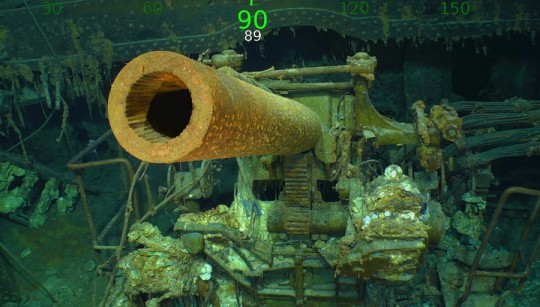
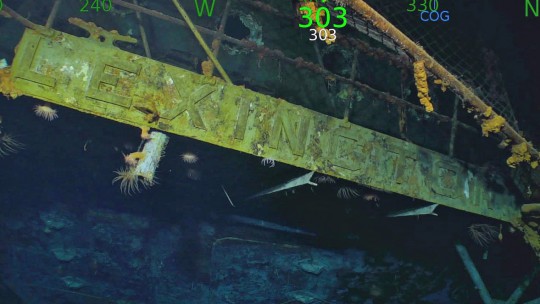
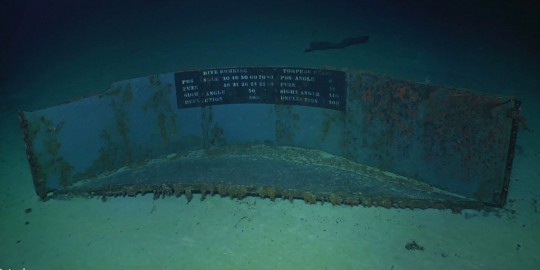
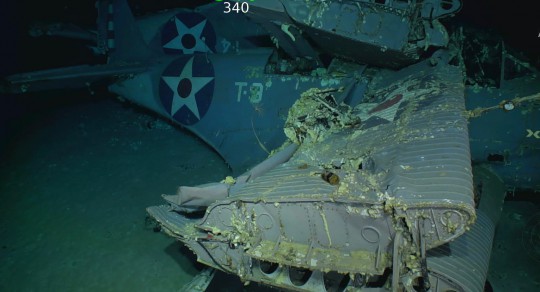
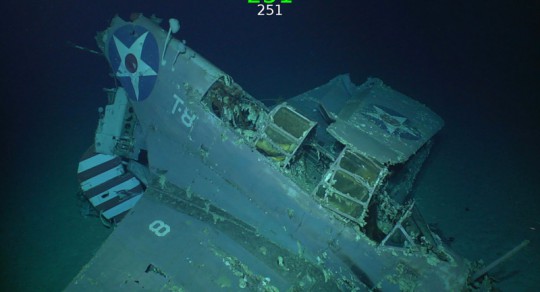
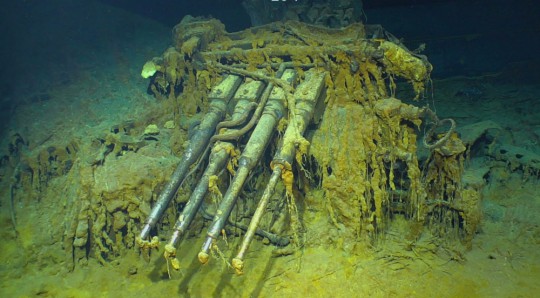
I took my son to walk the Lady Lex 3 times while he was growing up, one time with a tour. It captured his interest so much when he went to college, he majored in history I think every high schooler should walk the Lex.You can just feel the history inside this ship. I know it would inspire some High schoolers to join the navy.Maby cause my dad served in ww2 on these flatops as aircraft electrician (not thisone) & went around the world a couple times , I feel this way, like I have a connection.My dad was a cotton picker when he went in & came out with a trade.My uncle was on the Big E in radar.At 9 I got to see the insides of the Forestal the day before it went out to releive the Big E.We are not teaching enough history these days, thats for sure, Or the sacrifices troops make for our freedom.
My dad was on the Lady Lex CV2 when she was hit . He was for over 22 years and his last ship was Lex CV16 . He would have loved to see her now .
The Lexington was not found sooner because it is more than 2 miles deep and the ocean is really big. I am sure they had a approximate location of where it went down but things change rapidly in battle and a precise location is nearly impossible, also these were the days before GPS and all navigation was done manually with maps, compass and sextants.
Could someone tell me why it took so long to find Or did they know it was there and didn’t have funding to look at it
“The Japanese military was so surprised by the return of the USS Lexington (although a completely different ship) that it was nicknamed “the Blue Ghost”.
CV-16 USS Lexington (#2) is the one many of us saw and toured during her time here at Pensacola Naval Air Station where she served as a training platform for thousands upon thousands of Navy and Marine Corps pilots and aircrews.”
That is a great anecdote to this story, Bob C.! This is a fascinating story, and the pictures are amazing. 76 years under the sea, yet everything is still recognizable, almost fully intact. I wish my Daddy had lived long enough to see the Lady Lex once more…
The first, USS Lexington CV-2, an aircraft carrier entered service with the US Navy in 1928. This is the one found and referred to in this article, an AMAZINGLY well preserved ship.
Lexington CV-2 was badly damaged in the Battle of the Coral Sea, 7 May, 1942 and scuttled – sunk by crew – the following day.
The War Department and Navy rushed to complete CV-16 / USS Lexington and it was launched 23 September 1942.
The Japanese military was so surprised by the return of the USS Lexington (although a completely different ship) that it was nicknamed “the Blue Ghost”.
CV-16 USS Lexington (#2) is the one many of us saw and toured during her time here at Pensacola Naval Air Station where she served as a training platform for thousands upon thousands of Navy and Marine Corps pilots and aircrews.
USS Lexington CV-16 the Lady Lex / Blue Ghost was decommissioned 8 November 1991 and now is a museum in Corpus Christi, Texas.
My dad was one of the sailors that had to abandon the ship. That was the only ship he ever talked about from his life in the Navy and he was in the Navy for over 20 years.
I never knew there was a first Lady Lex. Great story. I can’t wait to share this with my Dad. He worked at the NAS his entire career and saw, everyday, the second Lady Lex. Awesome.
Awesome history